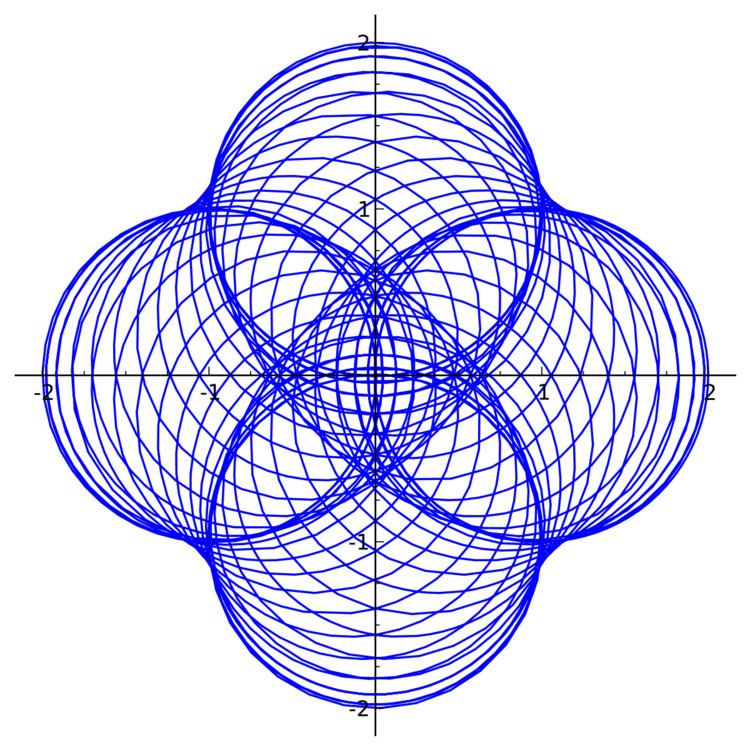 | ||
We take the functional theoretic algebra C[0, 1] of curves. For each loop γ at 1, and each positive integer n, we define a curve
Contents
- Multiplicative inverse of a curve
- n curves and their products
- Example 1 Product of the astroid with the n curve of the unit circle
- Example 2 Product of the unit circle and its n curve
- Example 3 n Curve of the Rhodonea minus the Rhodonea curve
- n Curving
- Example 1 of n curving
- Example 2 of n curving
- Generalized n curving
- Example 1
- Example 2
- References
- Their f-products, sums and differences give rise to many beautiful curves.
- Using the n-curves, we can define a transformation of curves, called n-curving.
Multiplicative inverse of a curve
A curve γ in the functional theoretic algebra C[0, 1], is invertible, i.e.
exists if
If
The set G of invertible curves is a non-commutative group under multiplication. Also the set H of loops at 1 is an Abelian subgroup of G. If
We use these concepts to define n-curves and n-curving.
n-curves and their products
If x is a real number and [x] denotes the greatest integer not greater than x, then
If
Suppose
Example 1: Product of the astroid with the n-curve of the unit circle
Let us take u, the unit circle centered at the origin and α, the astroid. The n-curve of u is given by,
and the astroid is
The parametric equations of their product
See the figure.
Since both
Example 2: Product of the unit circle and its n-curve
The unit circle is
and its n-curve is
The parametric equations of their product
are
See the figure.
Example 3: n-Curve of the Rhodonea minus the Rhodonea curve
Let us take the Rhodonea Curve
If
The parametric equations of
n-Curving
If
This new curve has the same initial and end points as α.
Example 1 of n-curving
Let ρ denote the Rhodonea curve
With the loop ρ we shall n-curve the cosine curve
The curve
See the figure.
It is a curve that starts at the point (0, 1) and ends at (2π, 1).
Example 2 of n-curving
Let χ denote the Cosine Curve
With another Rhodonea Curve
we shall n-curve the cosine curve.
The rhodonea curve can also be given as
The curve
See the figure for
Generalized n-curving
In the FTA C[0, 1] of curves, instead of e we shall take an arbitrary curve
Then, for a curve γ in C[0, 1],
and
If
given by
is the n-curving. We get the formula
Thus given any two loops
This we shall call generalized n-curving.
Example 1
Let us take
Note that
For the transformed curve for
The transformed curve
Example 2
Denote the curve called Crooked Egg by
Its parametric equations are
Let us take
where
The n-curved Archimedean spiral has the parametric equations
See the figures, the Crooked Egg and the transformed Spiral for
